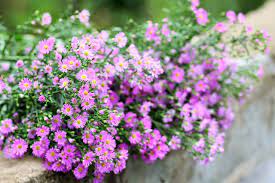**Chrysanthemums and Health Care: Benefits and Care Practices**

Chrysanthemums, known for their vibrant and diverse blooms, possess unique qualities that extend beyond their ornamental appeal. These beautiful flowers have a rich history of medicinal use and offer potential health benefits when incorporated into holistic wellness practices. This comprehensive guide explores the relationship between chrysanthemums and health care, highlighting their therapeutic properties and providing insights into effective care practices.
**1. Traditional and Cultural Uses**
Chrysanthemums have been utilized for centuries in traditional medicine systems, particularly in East Asia, where they are revered for their healing properties. In traditional Chinese medicine (TCM), chrysanthemum flowers (Chrysanthemum morifolium) are brewed into a fragrant tea known as “juhua cha.” This tea is believed to have cooling properties and is often consumed to relieve headaches, reduce fever, and alleviate eye strain caused by excessive screen time or reading.
In Japan, chrysanthemums are highly regarded as a symbol of longevity and are incorporated into cultural practices such as the annual Chrysanthemum Festival (Kiku Matsuri). The Japanese also enjoy chrysanthemum tea, which is believed to promote relaxation and reduce stress.
**2. Potential Health Benefits**
Chrysanthemums contain a variety of bioactive compounds that contribute to their potential health benefits:
– Antioxidant Properties: Chrysanthemum flowers are rich in antioxidants, including flavonoids and phenolic compounds, which help neutralize harmful free radicals in the body. Antioxidants play a crucial role in protecting cells from oxidative stress and reducing the risk of chronic diseases such as heart disease and cancer.
– Anti-inflammatory Effects: The anti-inflammatory properties of chrysanthemum extracts may help alleviate symptoms of inflammatory conditions such as arthritis and asthma. Chrysanthemum tea is often consumed for its calming effect on the respiratory system.
– Eye Health: Chrysanthemum tea is traditionally used to soothe tired eyes and improve vision. The tea is believed to reduce eye strain caused by prolonged screen time and exposure to bright lights.
– Liver Protection: Some studies suggest that chrysanthemum extracts may support liver health by promoting detoxification and protecting liver cells from damage.
**3. Incorporating Chrysanthemums into Wellness Practices**
To reap the health benefits of chrysanthemums, consider incorporating these practices into your wellness routine:
– Chrysanthemum Tea: Brew chrysanthemum tea by steeping dried chrysanthemum flowers in hot water for several minutes. Enjoy the tea hot or chilled, with or without honey, as a refreshing and healthful beverage.
– Aromatherapy: Chrysanthemum essential oil, derived from the flowers through steam distillation, can be used in aromatherapy to promote relaxation and reduce stress. Add a few drops of chrysanthemum essential oil to a diffuser or dilute it in a carrier oil for topical application.
– Herbal Remedies: Explore traditional herbal remedies that incorporate chrysanthemum extracts for specific health concerns. Consult with a qualified herbalist or healthcare provider before using herbal remedies for medicinal purposes.
**4. Care Practices for Healthy Chrysanthemums**
To ensure the health and vitality of chrysanthemum plants, practice the following care techniques:
– Optimal Growing Conditions: Plant chrysanthemums in well-drained soil and provide them with full sun to partial shade, depending on your climate. Adequate air circulation and regular watering are essential for preventing fungal diseases.
– Organic Pest Control: Use organic pest control methods to manage common pests such as aphids and spider mites. Avoid chemical pesticides that may harm beneficial insects and pollinators.
– Pruning and Deadheading: Regularly prune chrysanthemum plants to promote bushy growth and remove spent flowers to encourage continuous blooming. Pinch back new growth in spring to stimulate lateral branching.
By incorporating chrysanthemums into your health care regimen and following proper care practices for both plants and flowers, you can enjoy the beauty and potential health benefits of these remarkable flowers. Whether sipping chrysanthemum tea for relaxation or using chrysanthemum essential oil for aromatherapy, chrysanthemums offer a holistic approach to wellness that celebrates nature’s healing power.
**Holistic Health Benefits of Chrysanthemums and Care Practices**
Chrysanthemums, cherished for their ornamental beauty, also offer a range of holistic health benefits that make them a valuable addition to wellness practices. Beyond their traditional uses in herbal medicine, chrysanthemums can be incorporated into various health care routines to promote overall well-being. This continuation explores the holistic health benefits of chrysanthemums and provides detailed care practices for both the flowers and their potential therapeutic applications.
**1. Stress Reduction and Relaxation**
Chrysanthemums are revered for their calming properties, making them an ideal component of stress reduction and relaxation practices:
– Chrysanthemum Tea: Enjoying a cup of chrysanthemum tea is a time-honored way to unwind and de-stress. The soothing aroma and mild flavor of chrysanthemum tea help calm the mind and promote relaxation after a long day.
– Aromatherapy: Chrysanthemum essential oil can be diffused in the air or used in massage oils to alleviate tension and reduce stress. Inhaling the floral scent of chrysanthemum essential oil can have a calming effect on the nervous system.
– Meditation and Mindfulness: Incorporate chrysanthemums into meditation or mindfulness practices by surrounding yourself with their presence. Cultivating a sense of tranquility with chrysanthemums can enhance the benefits of relaxation techniques.
**2. Eye Health and Vision Support**
Chrysanthemum tea is traditionally used to promote eye health and support vision:
– Eye Strain Relief: Drinking chrysanthemum tea is believed to alleviate eye strain caused by prolonged screen time or reading. The cooling properties of chrysanthemum tea help refresh tired eyes and reduce discomfort.
– Vision Enhancement: Regular consumption of chrysanthemum tea is associated with improved vision and overall eye health. The antioxidants and vitamins present in chrysanthemums contribute to maintaining healthy eyesight.
**3. Respiratory Support and Allergy Relief**
Chrysanthemum tea and extracts are valued for their respiratory benefits:
– Asthma and Allergy Relief: Chrysanthemum tea may help alleviate symptoms of asthma and seasonal allergies due to its anti-inflammatory properties. Drinking chrysanthemum tea can provide relief from respiratory congestion and irritation.
– Lung Health: Chrysanthemum extracts have been studied for their potential to support lung health and protect against respiratory infections. Incorporating chrysanthemum-based remedies into respiratory care routines may enhance overall lung function.
**4. Liver Detoxification and Metabolic Support**
Chrysanthemum extracts are known for their detoxifying effects on the liver:
– Liver Cleansing: Chrysanthemum tea is believed to promote liver detoxification and aid in the elimination of toxins from the body. Regular consumption of chrysanthemum tea may support overall metabolic health.
– Digestive Aid: Chrysanthemum tea can soothe digestive discomfort and promote healthy digestion. The mild diuretic properties of chrysanthemum tea may also help flush toxins from the kidneys.
**5. Skin Care and Anti-Aging Benefits**
Chrysanthemum extracts are valued for their skincare properties:
– Anti-Inflammatory Effects: Topical application of chrysanthemum extracts may help reduce inflammation and soothe skin irritations. Chrysanthemum-based skincare products are sought after for their calming and rejuvenating effects.
– Antioxidant Protection: The antioxidants present in chrysanthemum extracts help protect the skin from oxidative stress and premature aging. Incorporating chrysanthemum-based serums or creams into skincare routines can promote youthful and radiant skin.
**6. Care Practices for Chrysanthemum Health**
To maximize the health benefits of chrysanthemums and ensure their well-being, follow these care practices:
– Regular Watering: Water chrysanthemum plants consistently to maintain soil moisture levels. Avoid overwatering, which can lead to root rot, and provide adequate drainage to prevent waterlogged soil.
– Balanced Fertilization: Apply a balanced fertilizer formulated for flowering plants during the growing season to promote healthy growth and abundant blooms. Avoid excessive nitrogen, which can result in lush foliage at the expense of flowers.
– Pest Management: Monitor chrysanthemum plants for signs of pests and disease. Use organic pest control methods to manage common pests such as aphids and spider mites without harming beneficial insects.
– Pruning and Deadheading: Regularly prune chrysanthemum plants to promote bushy growth and remove spent flowers to encourage continuous blooming. Pinch back new growth in spring to stimulate lateral branching.
Incorporating chrysanthemums into holistic health care practices can enhance overall well-being and promote a sense of balance and vitality. Whether enjoying chrysanthemum tea for relaxation, using chrysanthemum essential oil for aromatherapy, or exploring the potential therapeutic benefits of chrysanthemum extracts, these versatile flowers offer a natural approach to supporting health and wellness. By nurturing chrysanthemum plants with proper care and embracing their holistic health benefits, individuals can experience the transformative power of nature in promoting physical, mental, and emotional well-being.

